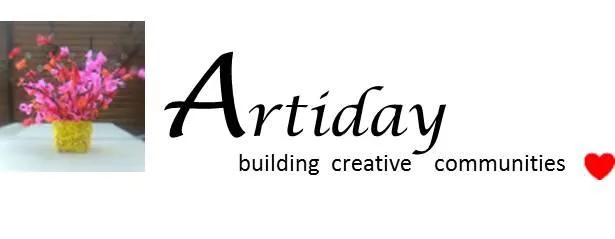India has a wealth of traditional art forms that have existed for hundreds of years. These art forms are sustainable as they use natural resources and materials available locally. Every art form is unique to its region such as cane furniture from the Northeast, natural dye printing from Rajasthan, Warli art from Maharashtra, Rogan art from Gujarat and Madhubani from Bihar, just to name a few. Unfortunately, we are losing this wealth of arts and crafts as artists are struggling with the invention of man-made materials and lack of financial backing. They need more support to raise awareness about the benefits these art forms have on the environment and the wellbeing of the community.
Videos by Nitin Yadav
Edited by Kevin Grist
These art forms keep me connected to my creative roots and I feel the responsibility to find ways to save some of them. I have set myself on a journey to learn and research, document and share and collaborate with Indian artists so others can discover their beauty and see the benefits.
I am grateful to the Arts Council England for their support in this journey.
I started my creative research in Rajasthan with photographer Nitin Yadav from India. Together we explored some of the many beautiful art forms Rajasthan has to offer, such as printing with natural dyes, paper mache and kathputli art.
Our first stop was the beautiful Amer fort of Jaipur which has 400 years old painted motifs where paints used were made of vegetable peels, flowers and pigments of precious and semi-precious stones.
Next, we set off to Pipad, a village in the outskirts of Jodhpur, to learn about printing with natural dyes and met Yasin Shahabudin Chippa and his team.
Yasin uses 100% natural materials which are locally sourced, hand printed and dyed using old traditional techniques. He is passionate about his work which has been a part of his family for generations. He has taken his work to many countries, including the South Bank Centre in London to raise awareness about the benefits of natural dyes. He has a dedicated team of local artisans who have been practising this artform for more than 30 years. His team was very welcoming and helped me to understand the process of Dabu printing using natural dyes made of flowers, leaves, fruits and metal rust. Their dedication, hard work and precision is admirable.
Our next stop was Palai, a small village 60 Kms from Jaipur to work with Virender Sharma, an award winning paper mache artist. Virender’s practice is inspirational. He uses his art form to not only boost mental health and wellbeing, but also to bring communities together. Virender is a great advocate of natural resources, and his studio is a great example of sustainable living. He uses his studio as an arts hub where he invites and collaborates with local artists in the area. The environment is always lively with musicians, local craftsmen and local community groups regularly use the space. It is also a space for disadvantaged young people to experiment with various artforms. Virender gave me an insight into how a simple, inexpensive art form can be used to connect and empower communities.
Kathputli Nagar in the heart of Jaipur was our last stop. Kathputli means wooden doll or puppet -kath means wood and putali means doll. Kathputli Nagar provides shelter to about 5000 artist families, but they are living in poor conditions with modest amenities. Kathputi is another one of the disappearing art forms in India as the artists struggle for basic support and to make a living. This has led to many leaving the generations of traditional work and moving to other trades in nearby cities.
I was introduced to Kathputli Nagar by the world record holder puppeteer Vrinda Haladi.
She introduced me to Ashok Bhat who has been practising Kathputi art for more than 30 years. He explained how he uses recycled materials and illustrated the history of Kathputli making (as passed on from his grandfather) and the powerful storytelling element of Kathputli art.
It is now time for me to take a break in my journey and reflect on my learning to develop a wellbeing programme and to share these creative tools with others. I will use my insight and knowledge to create a resource for the southeast Asian community to develop a creative connection to their roots.
Here is a zine I have put together to share my journey. A hard copy of the zine is avaliable on request.
Designed by Shermine Slocombe
Photography by Nitin Yadav



